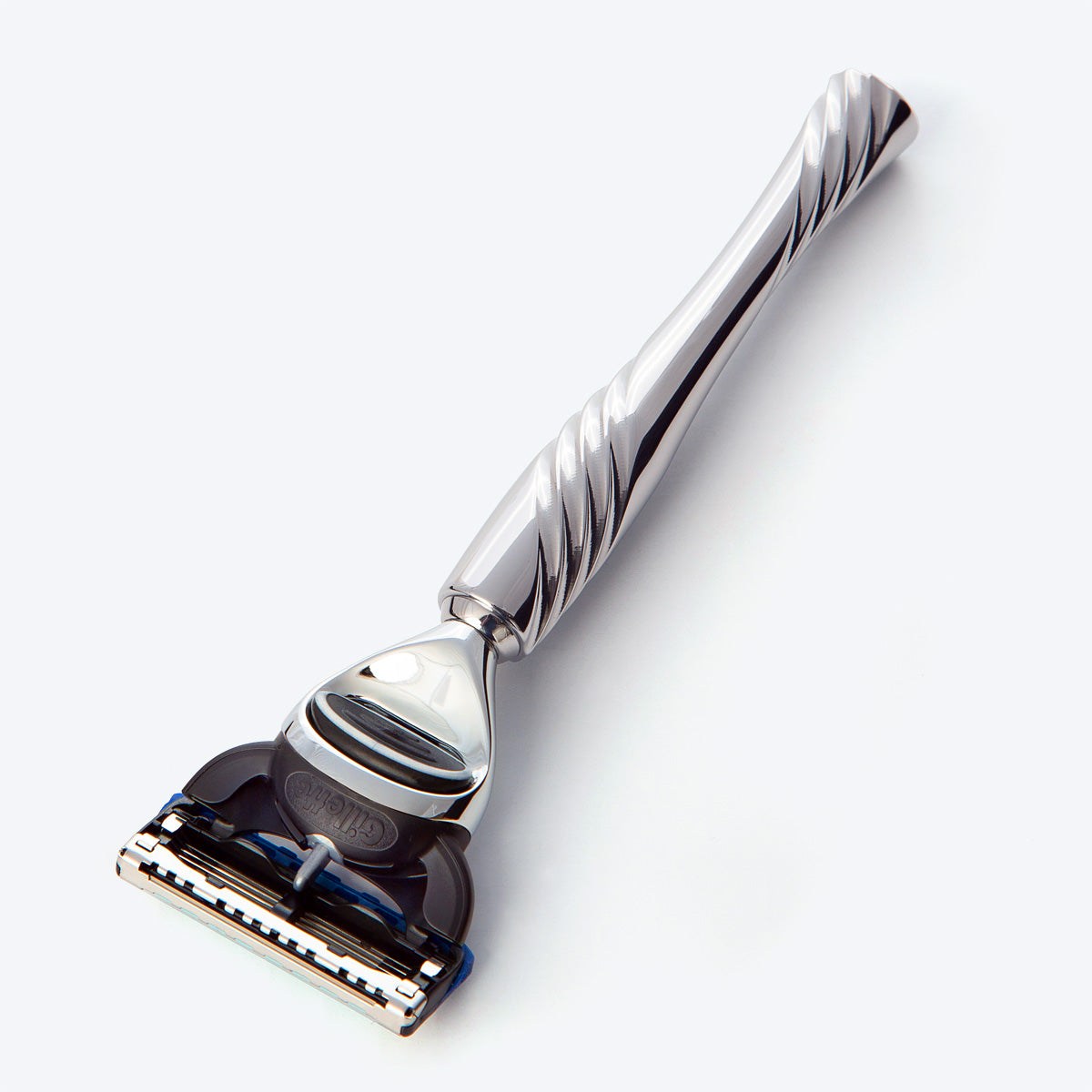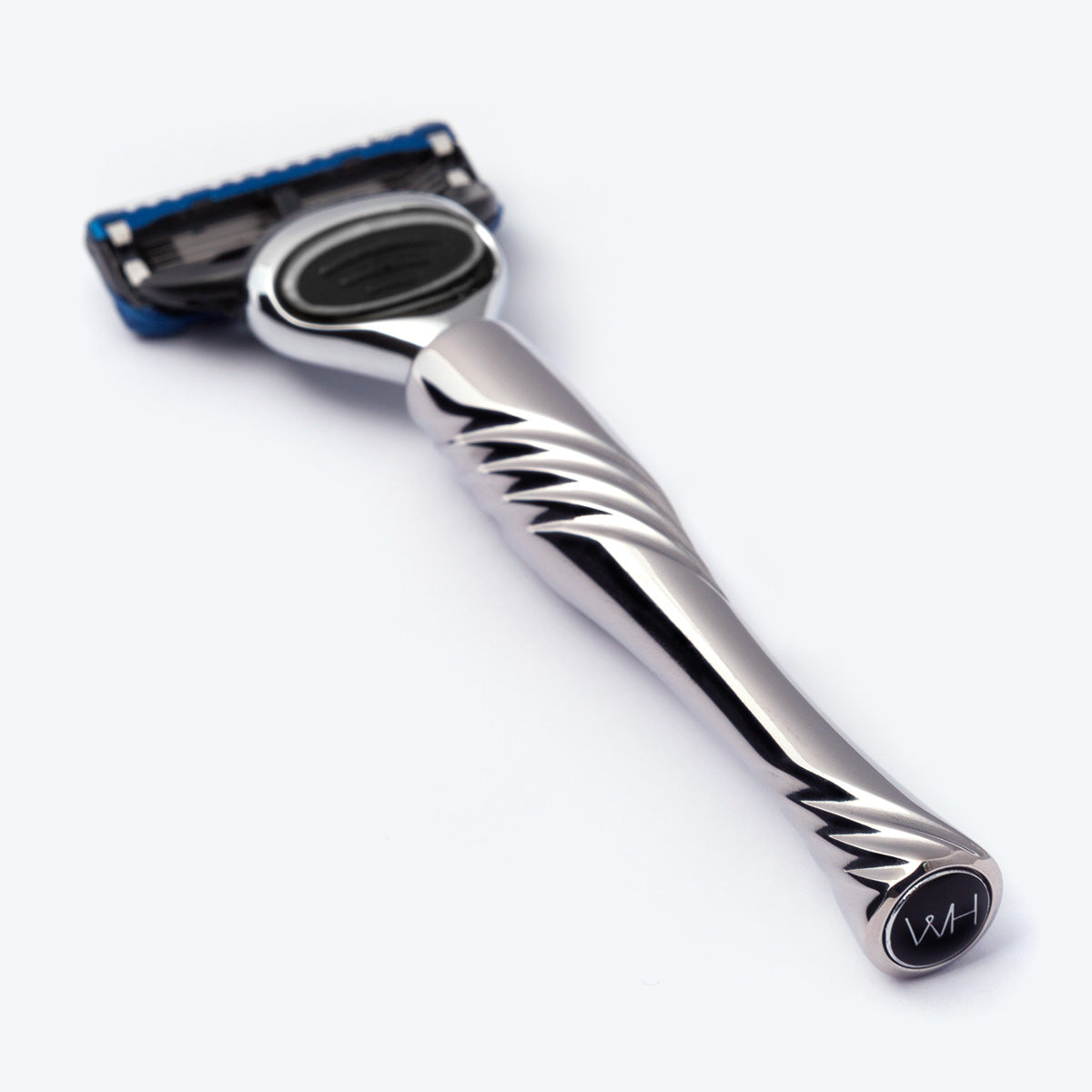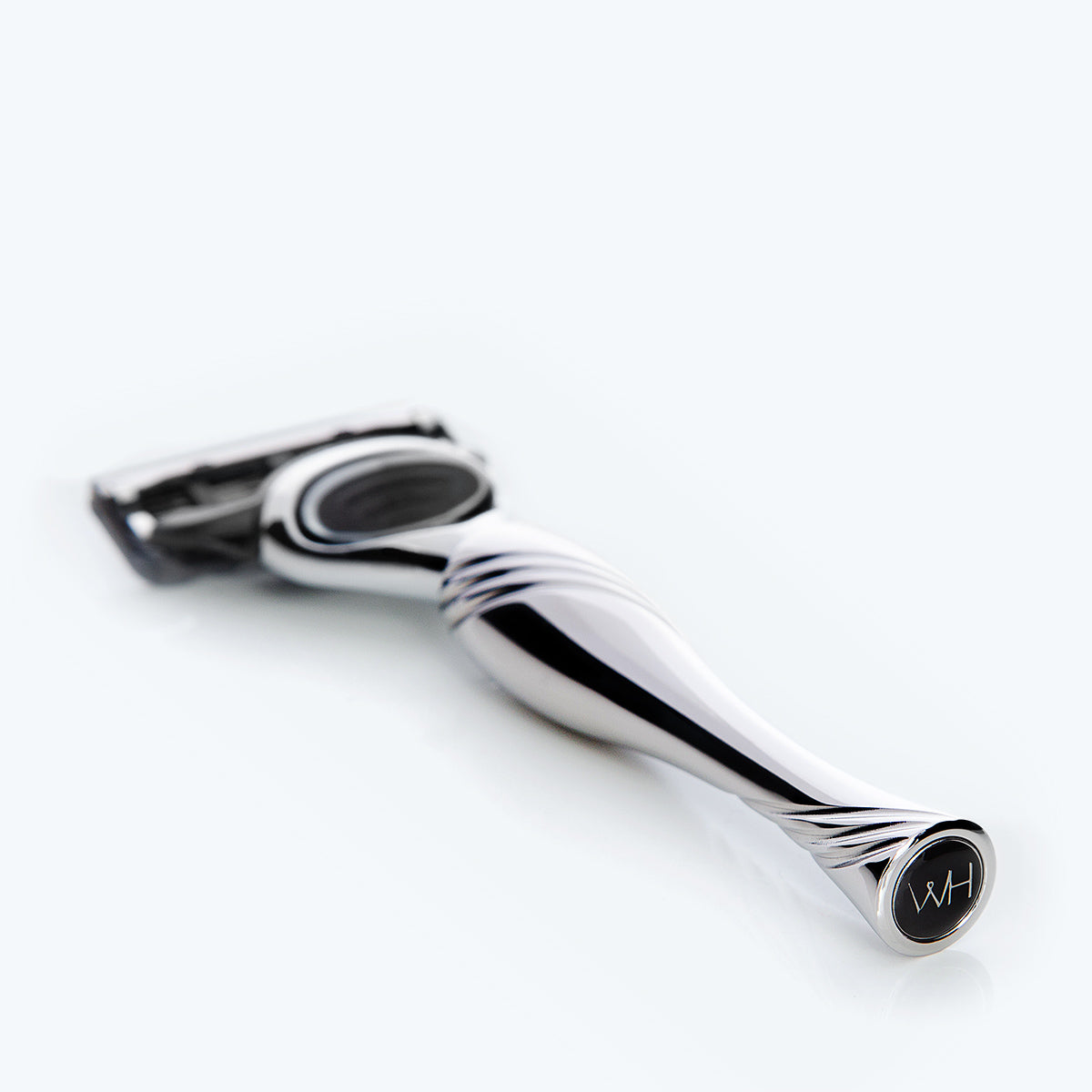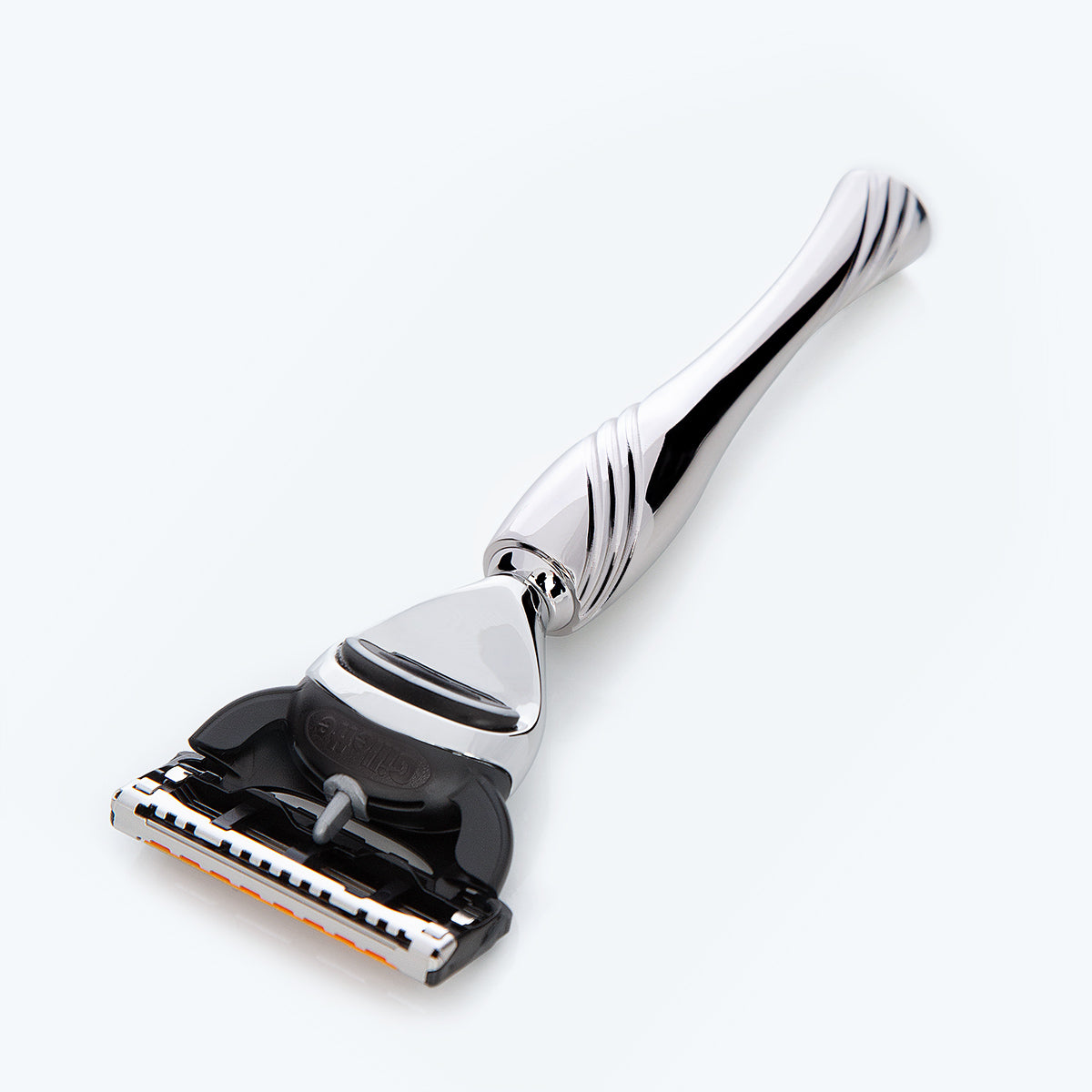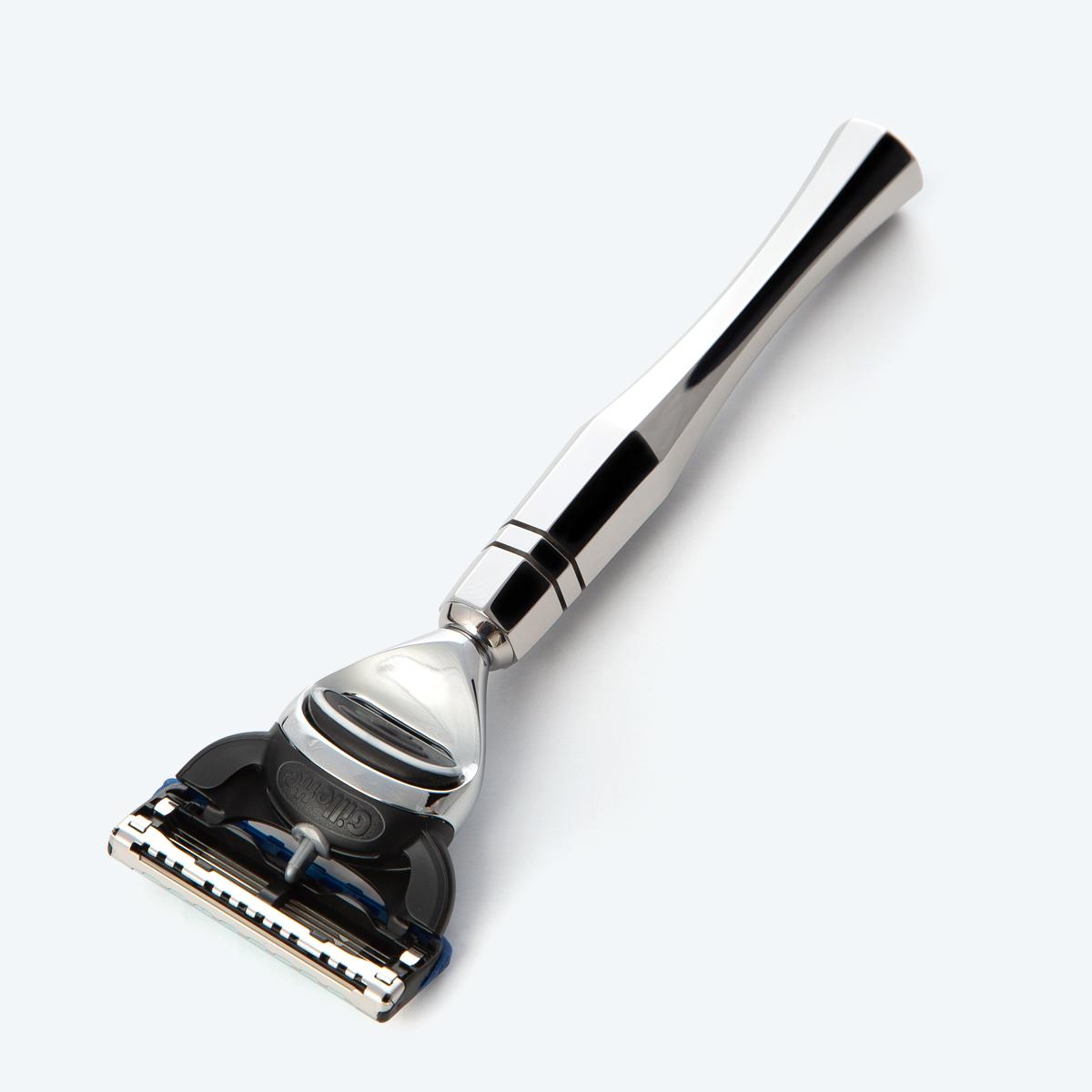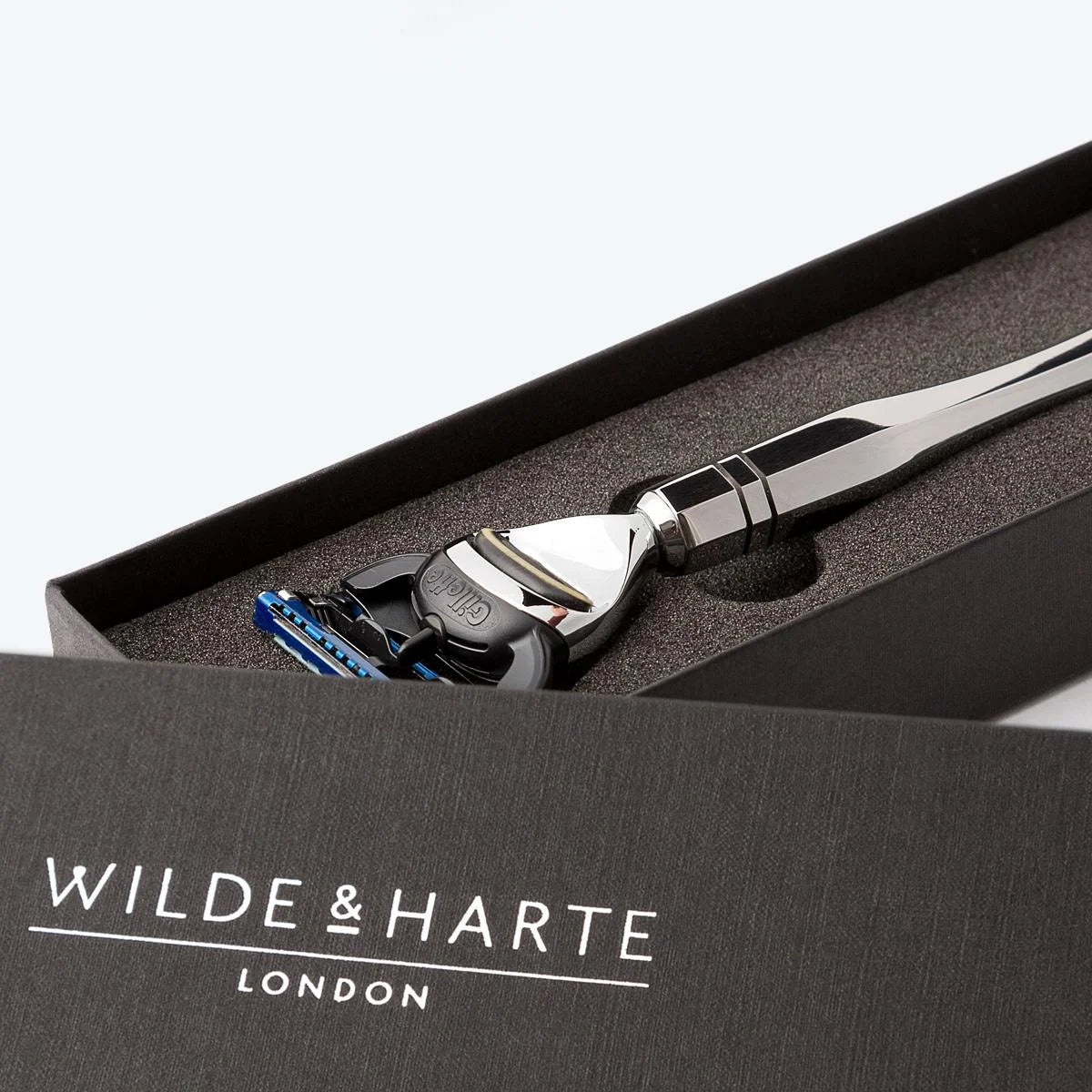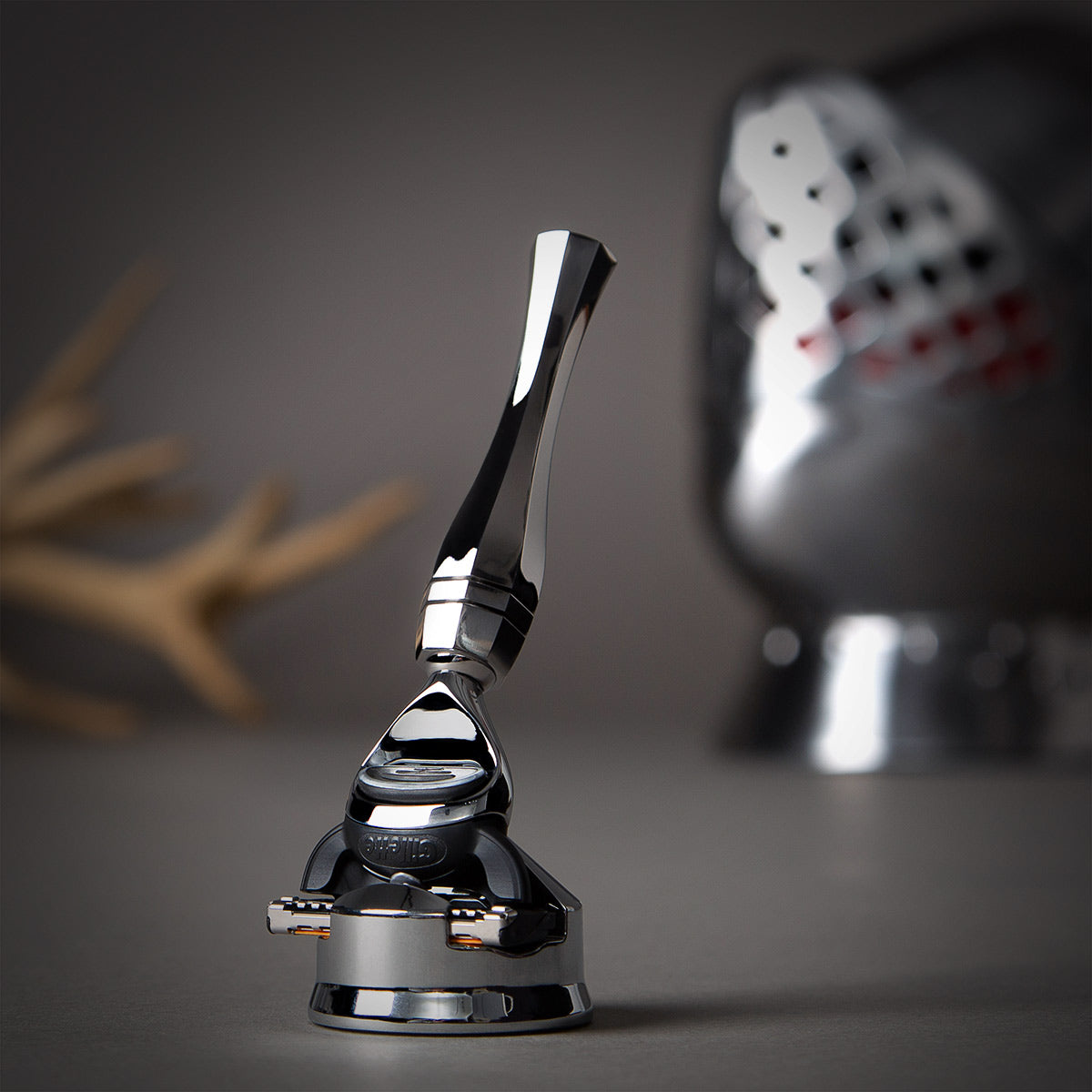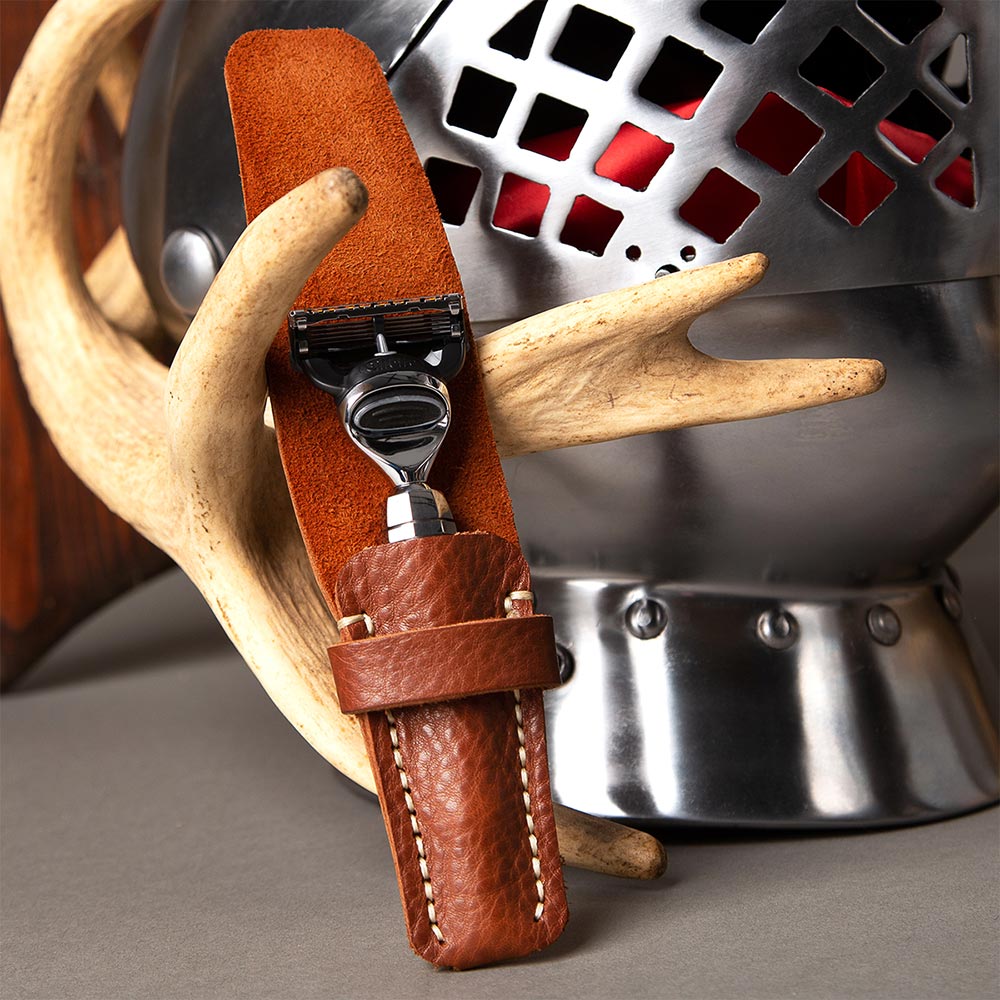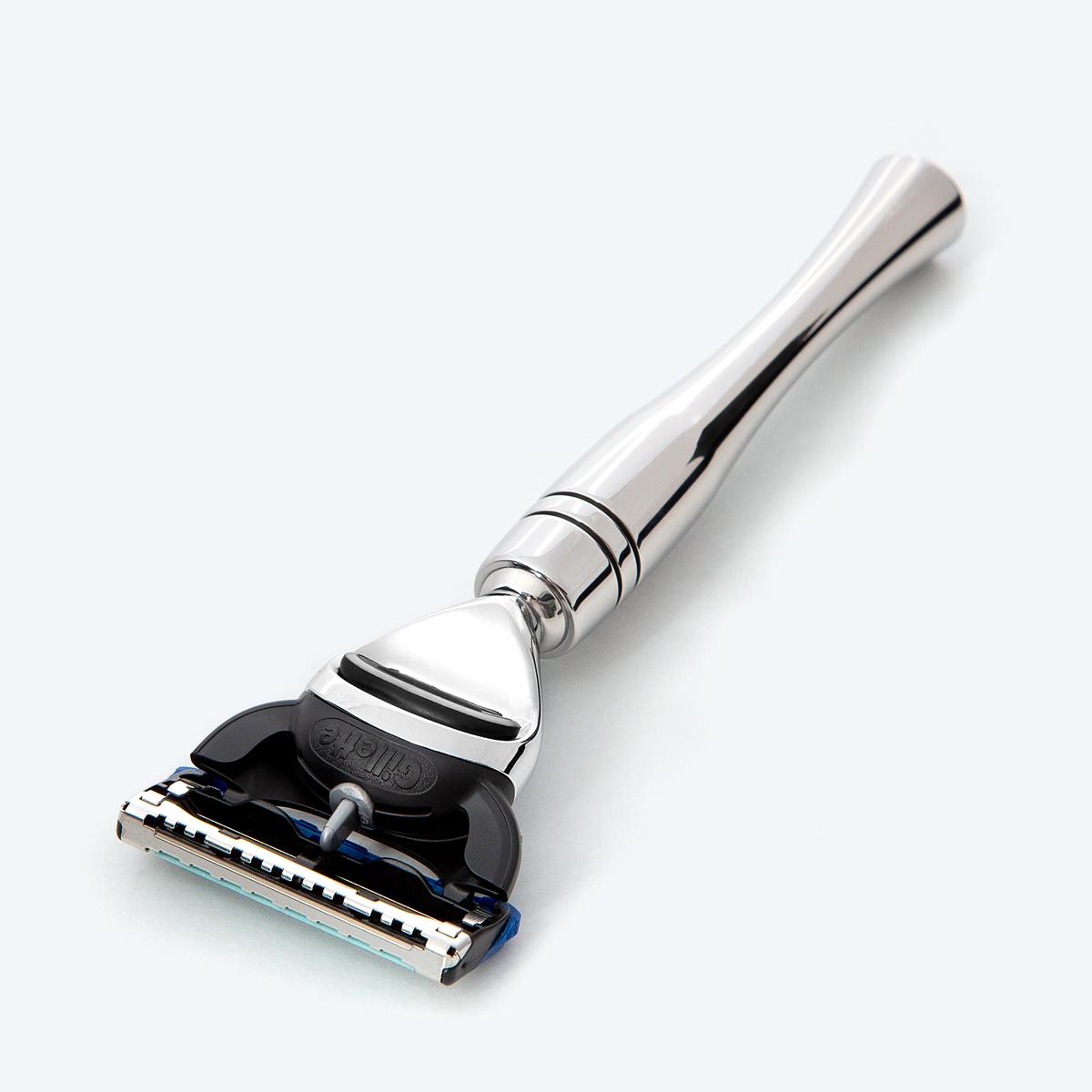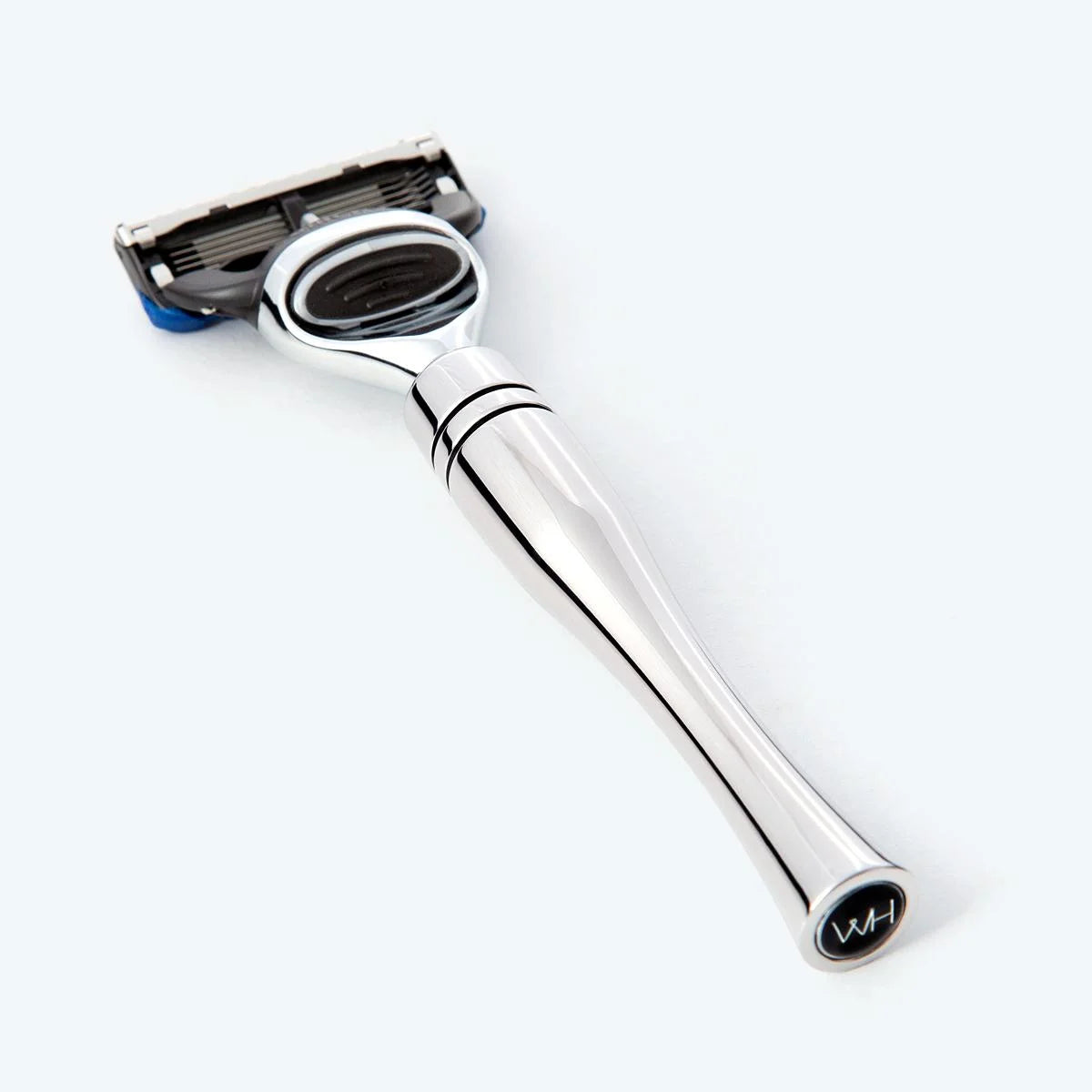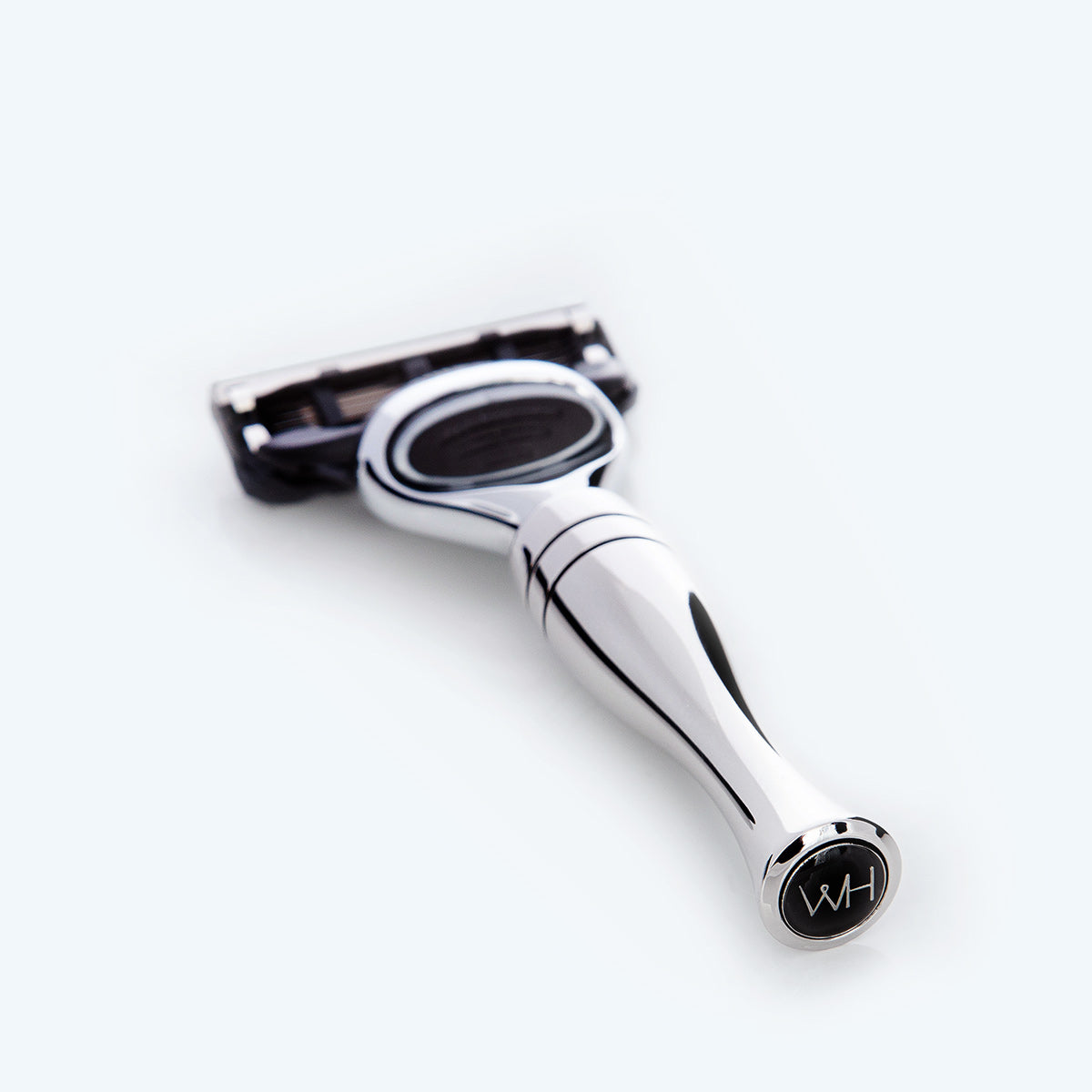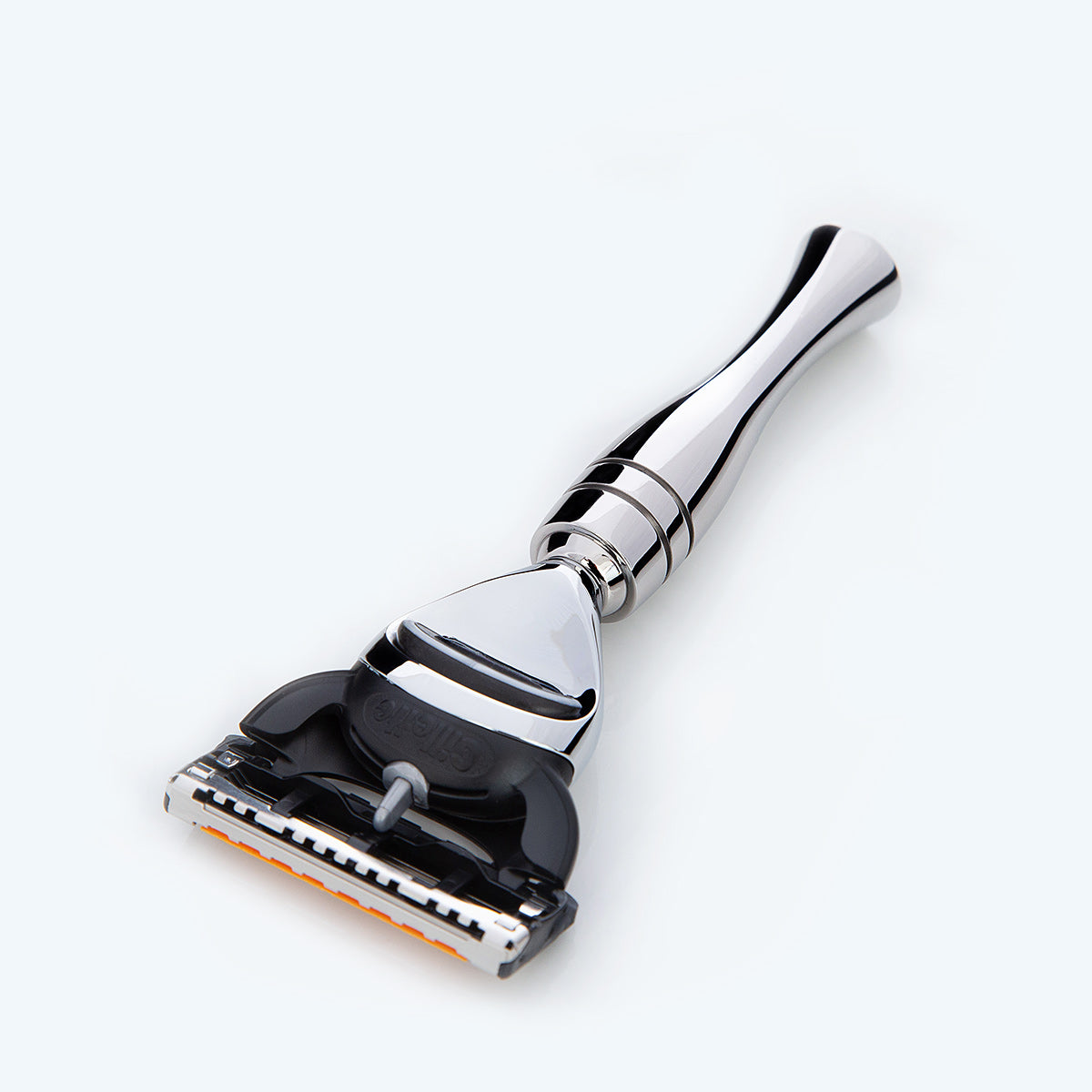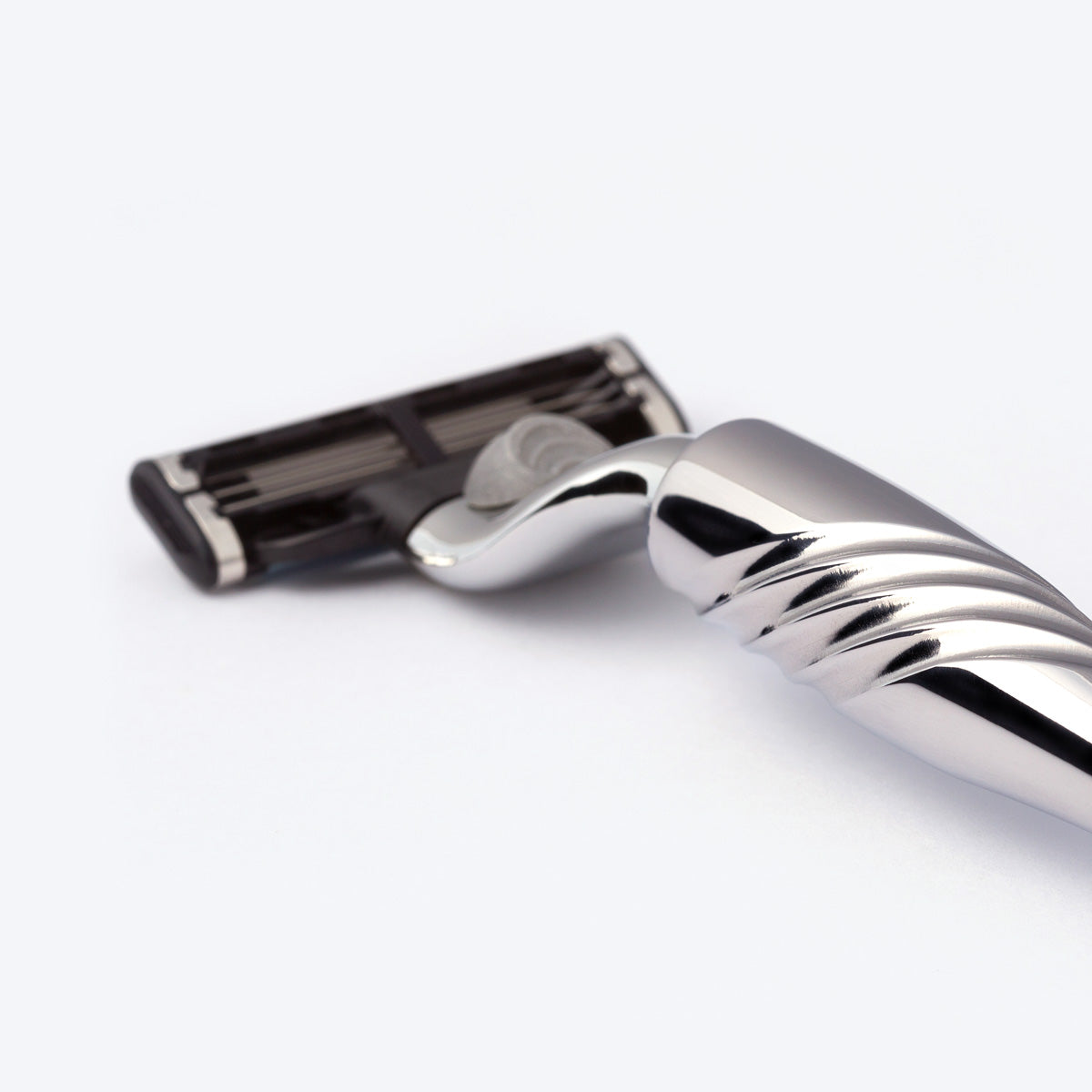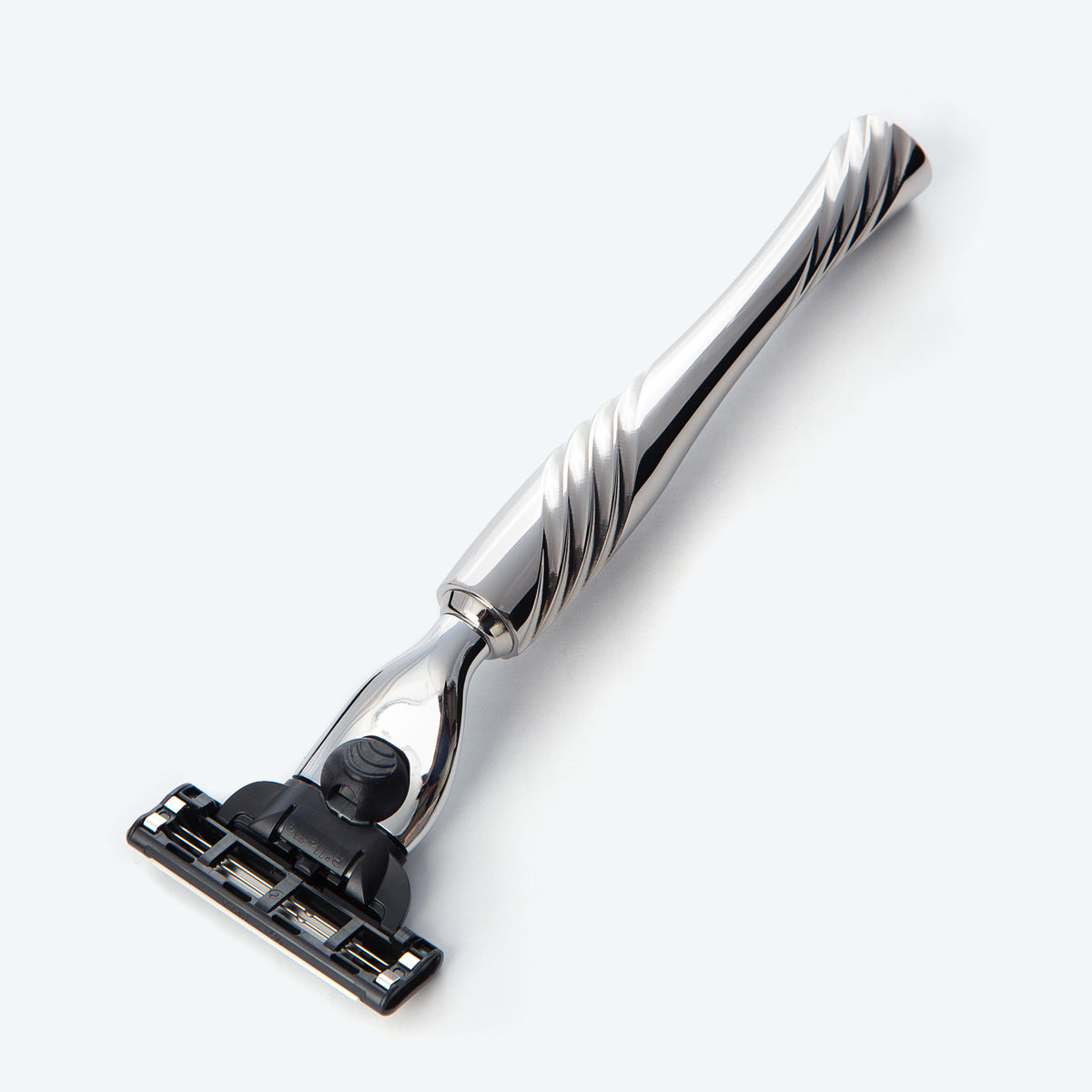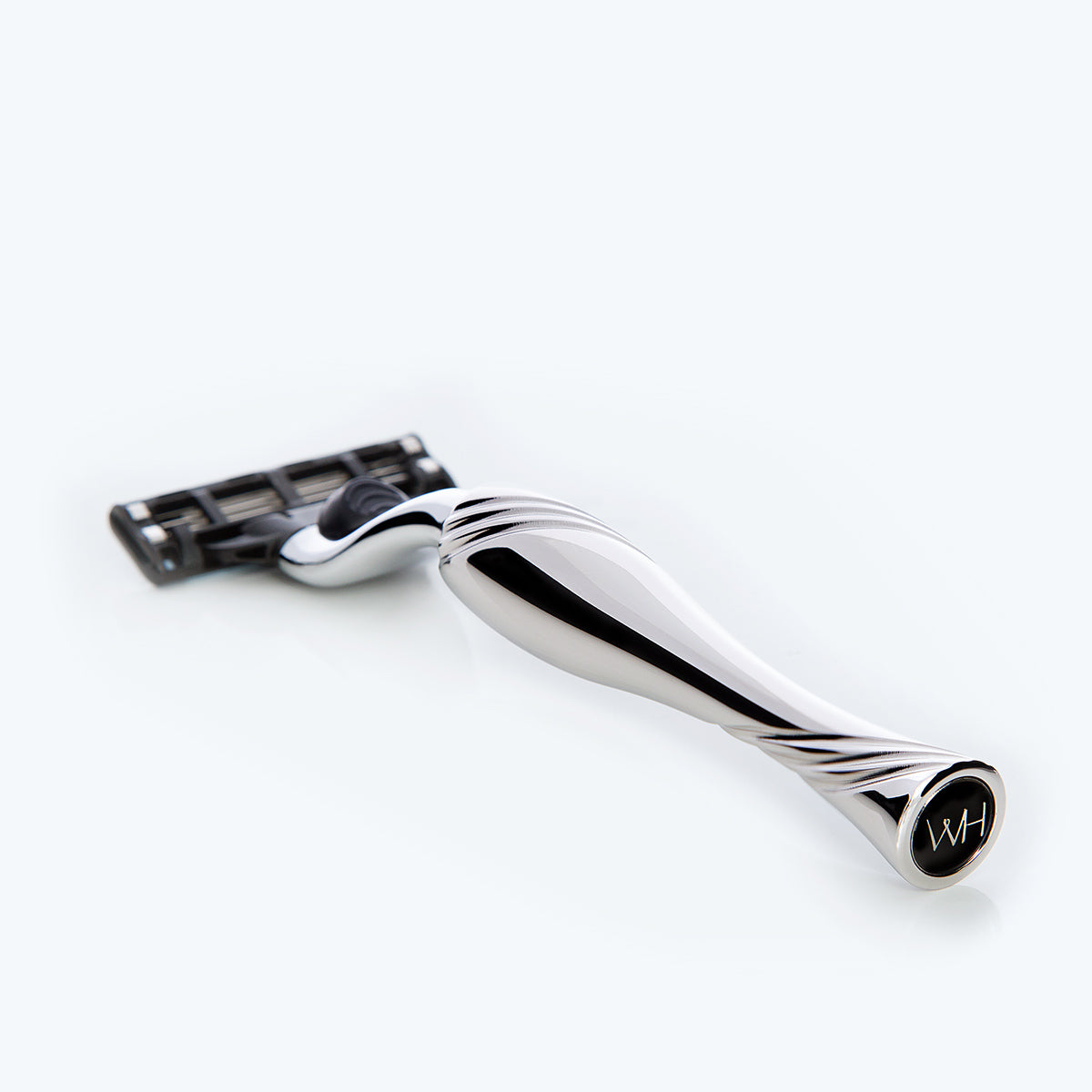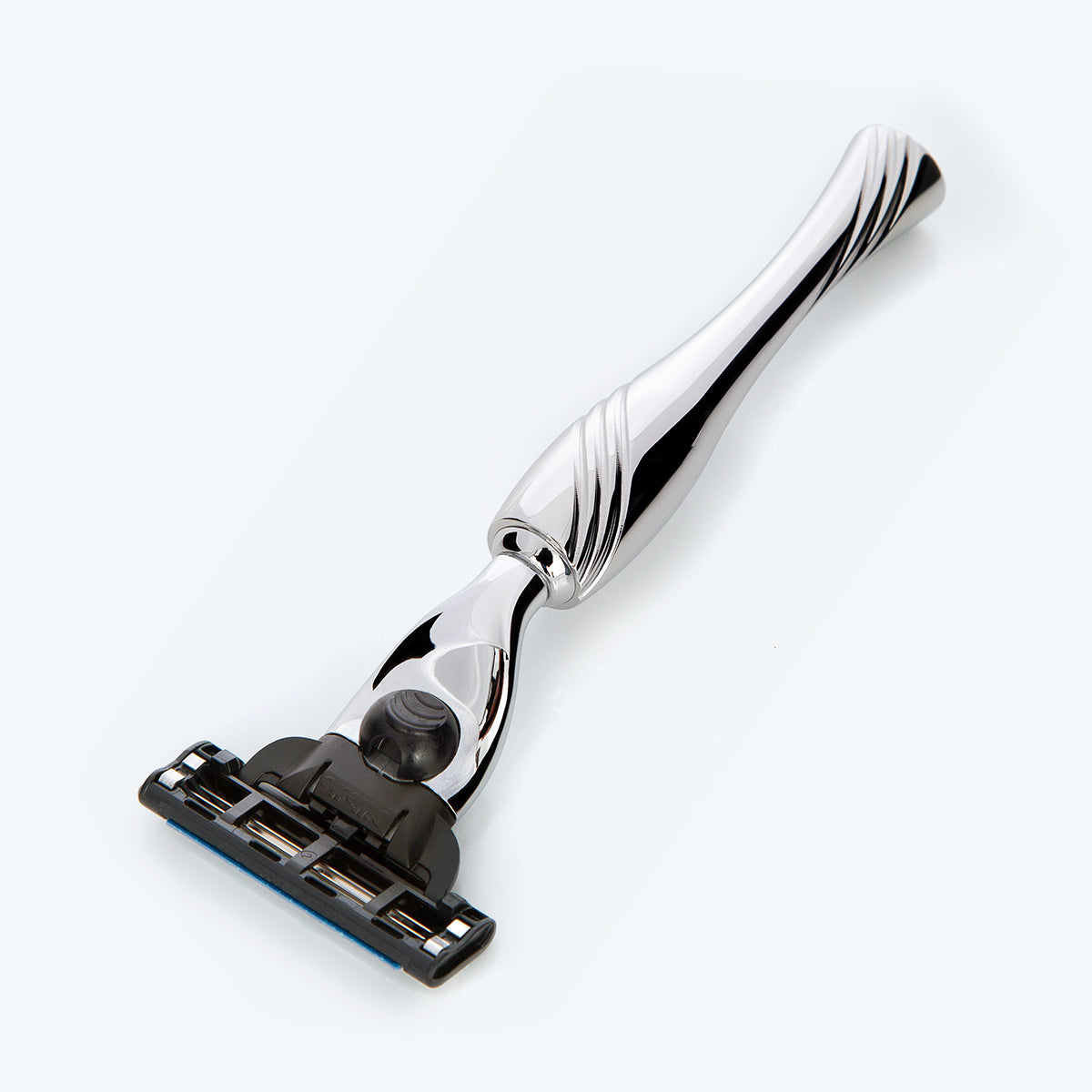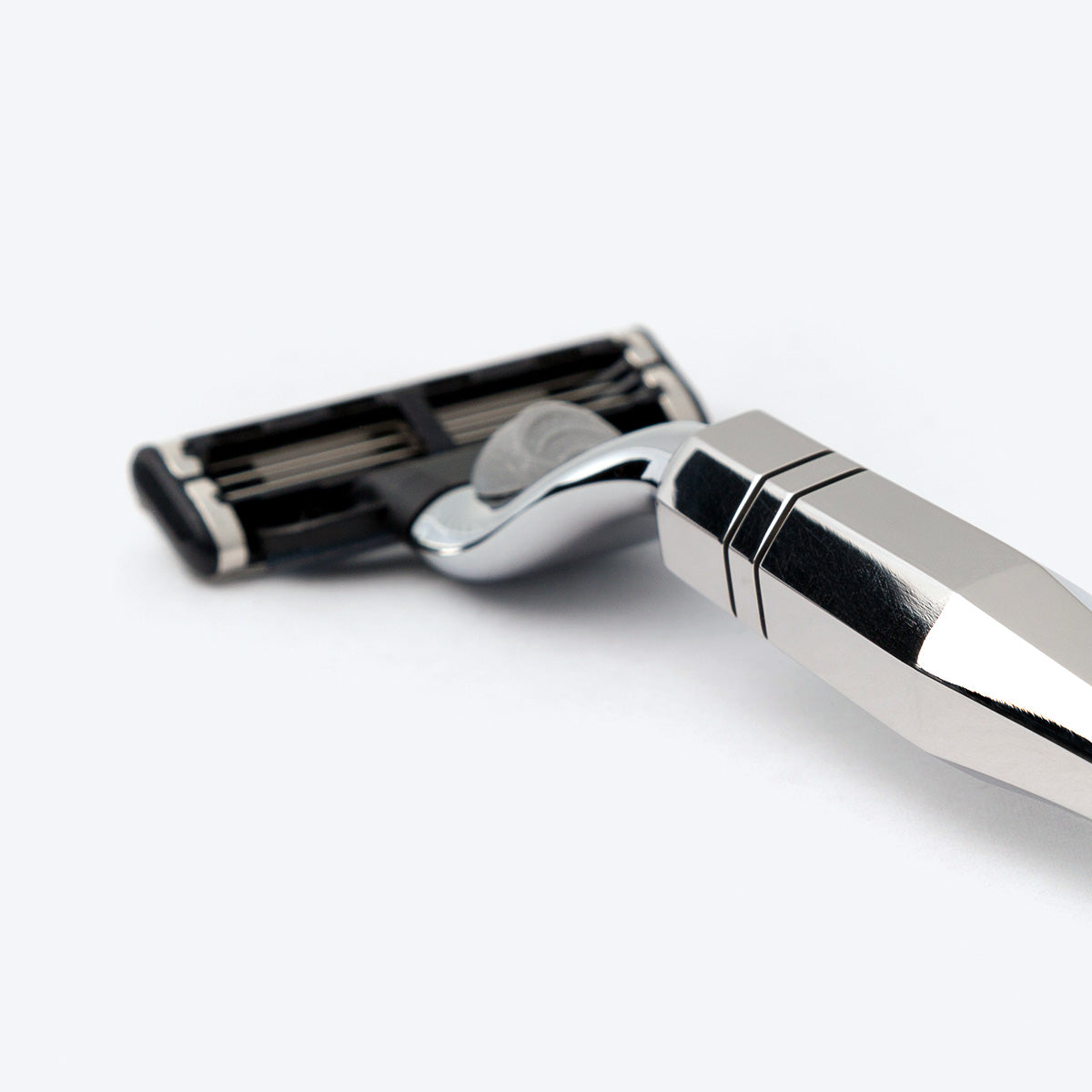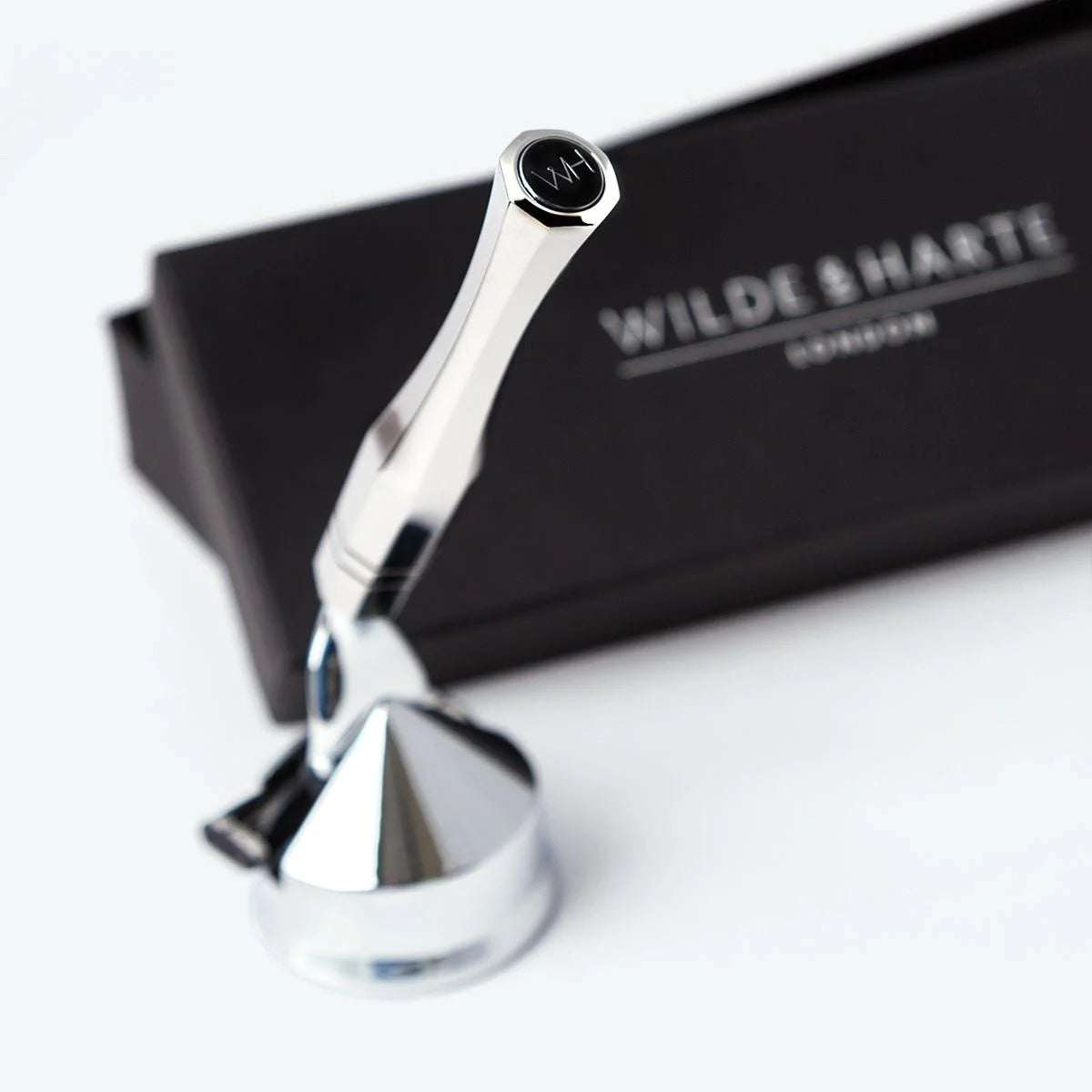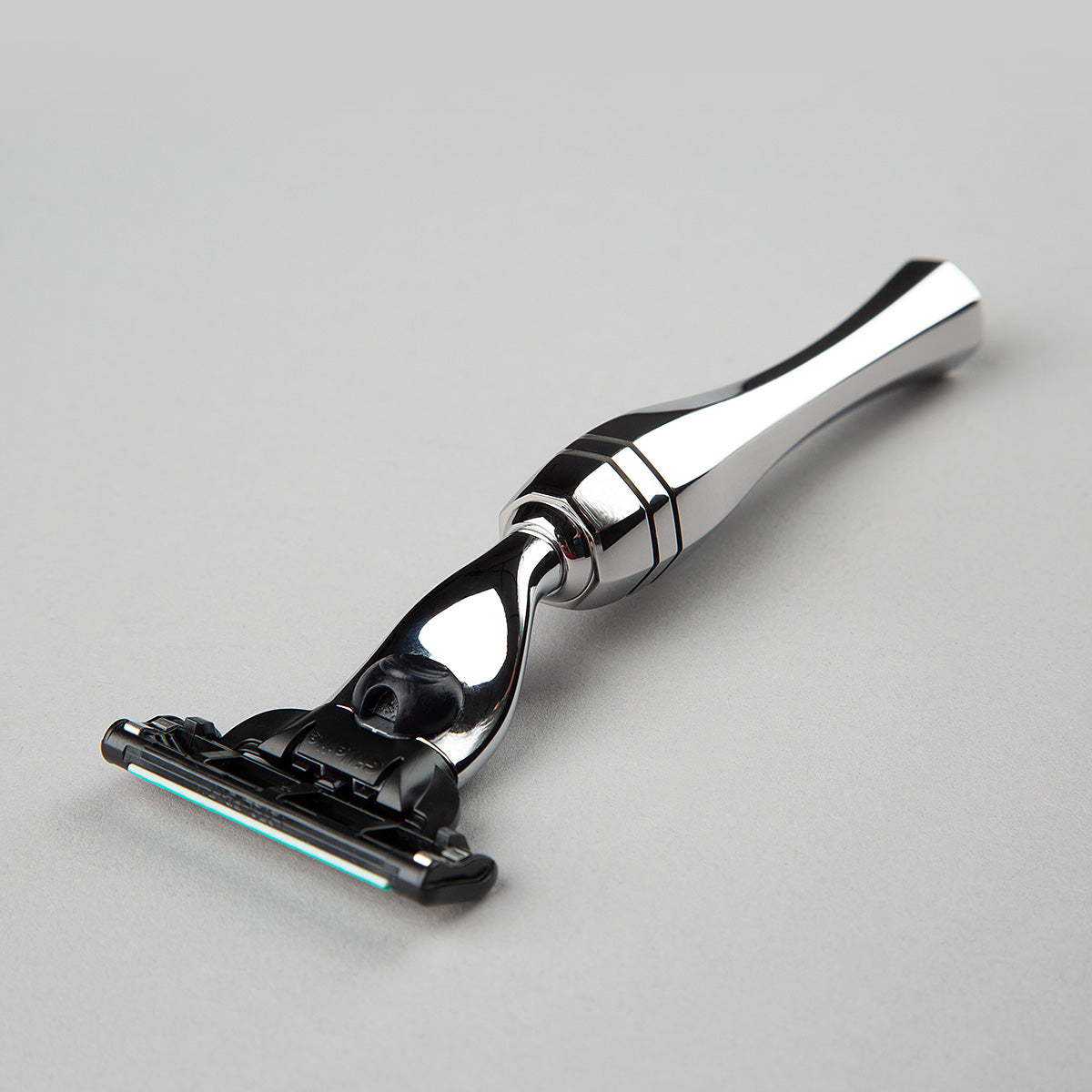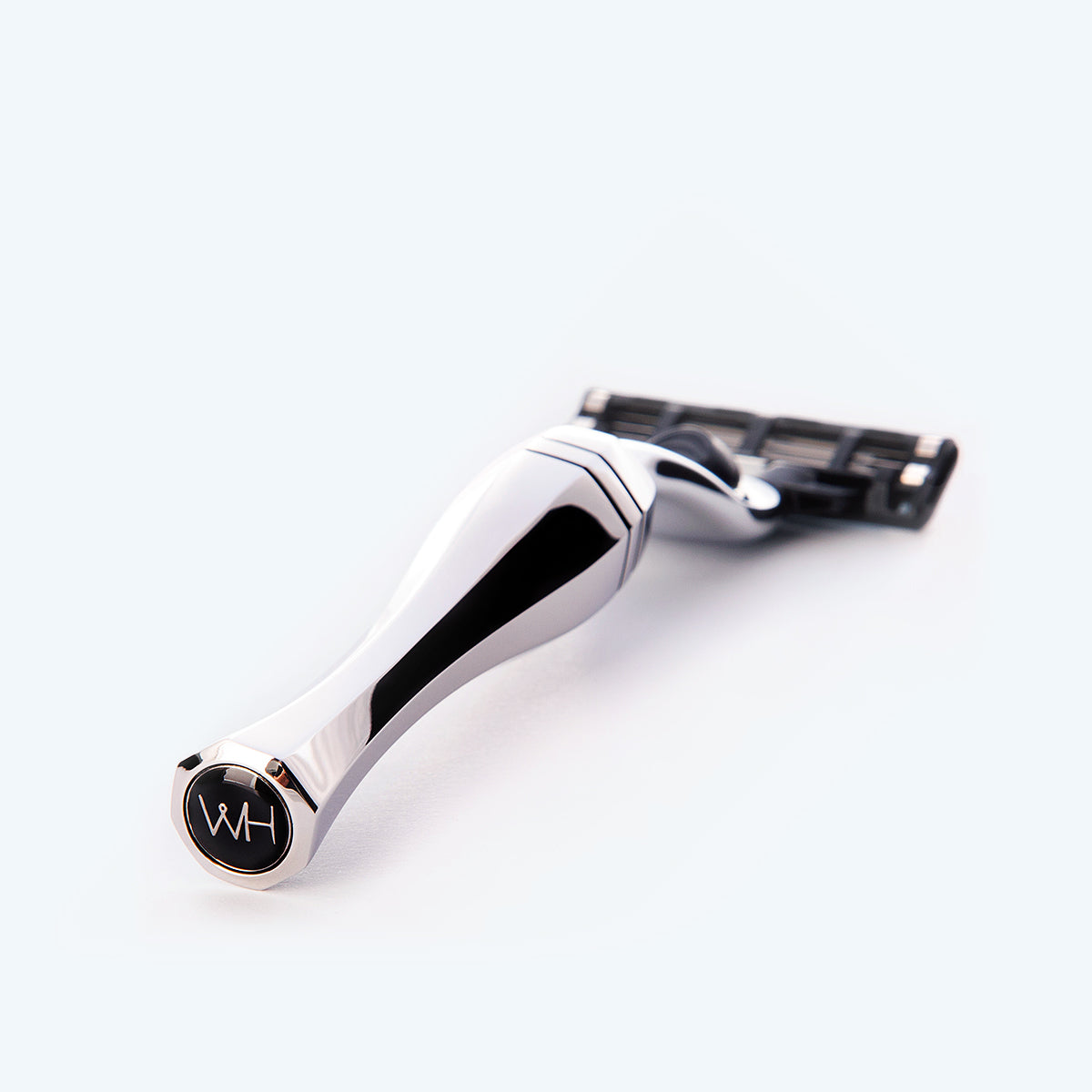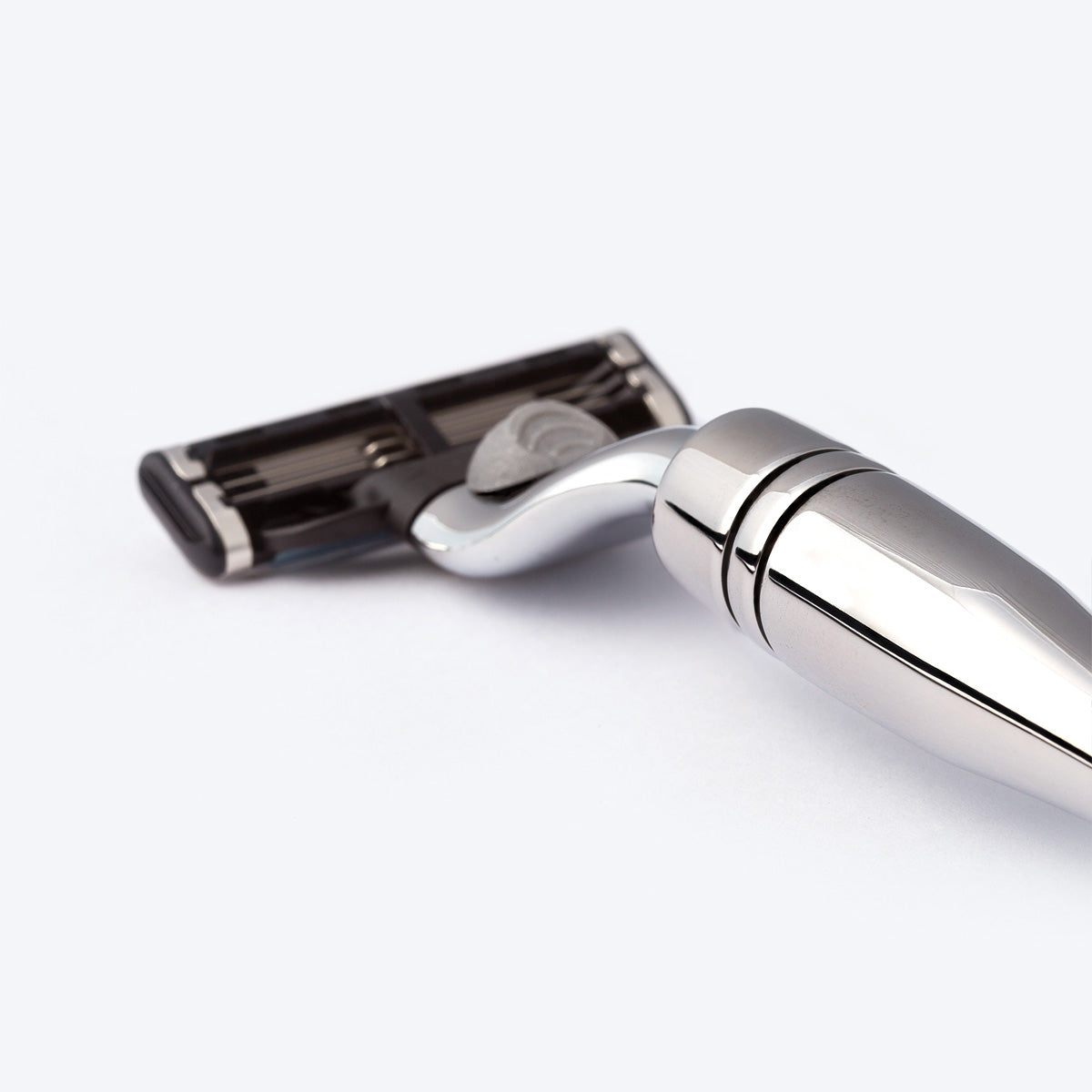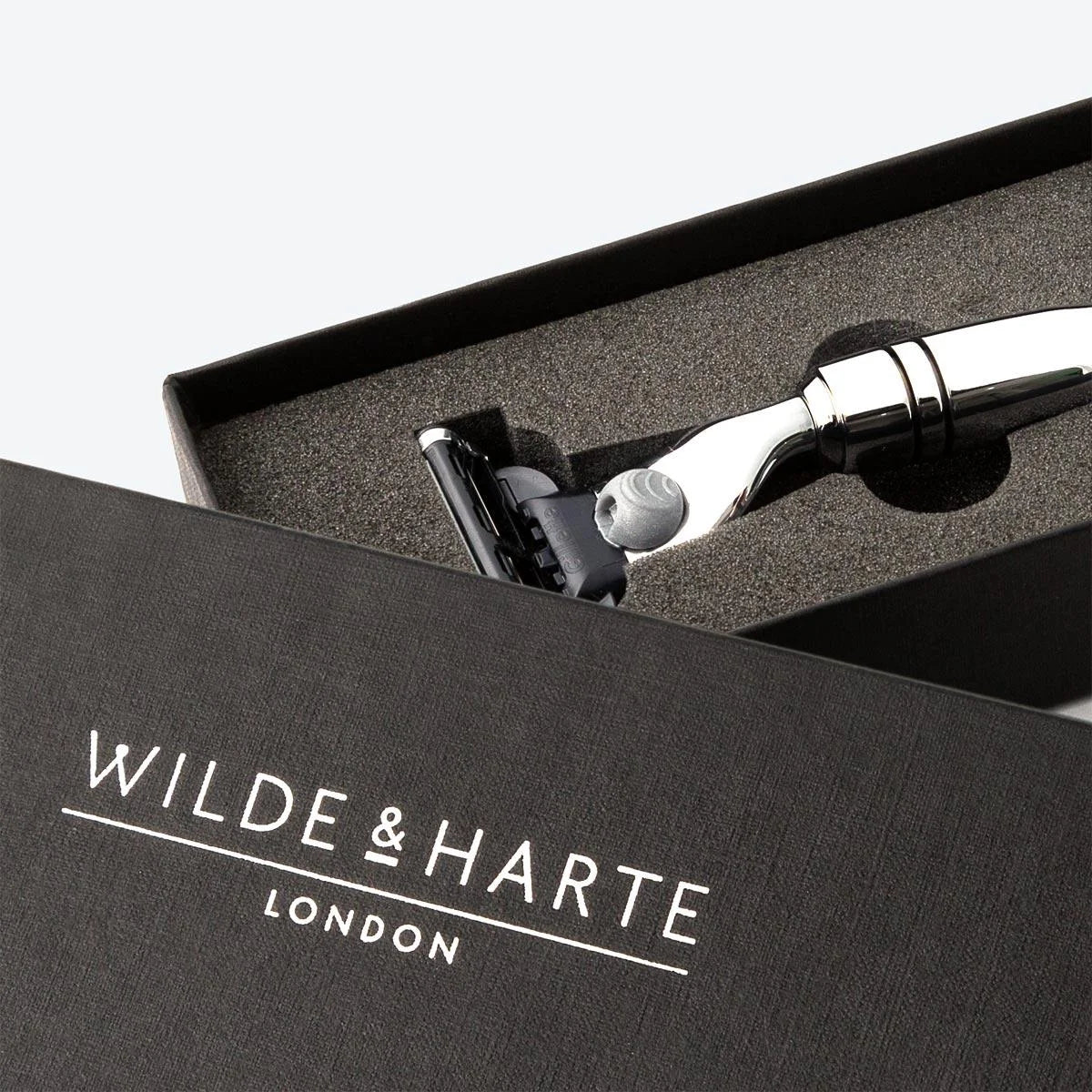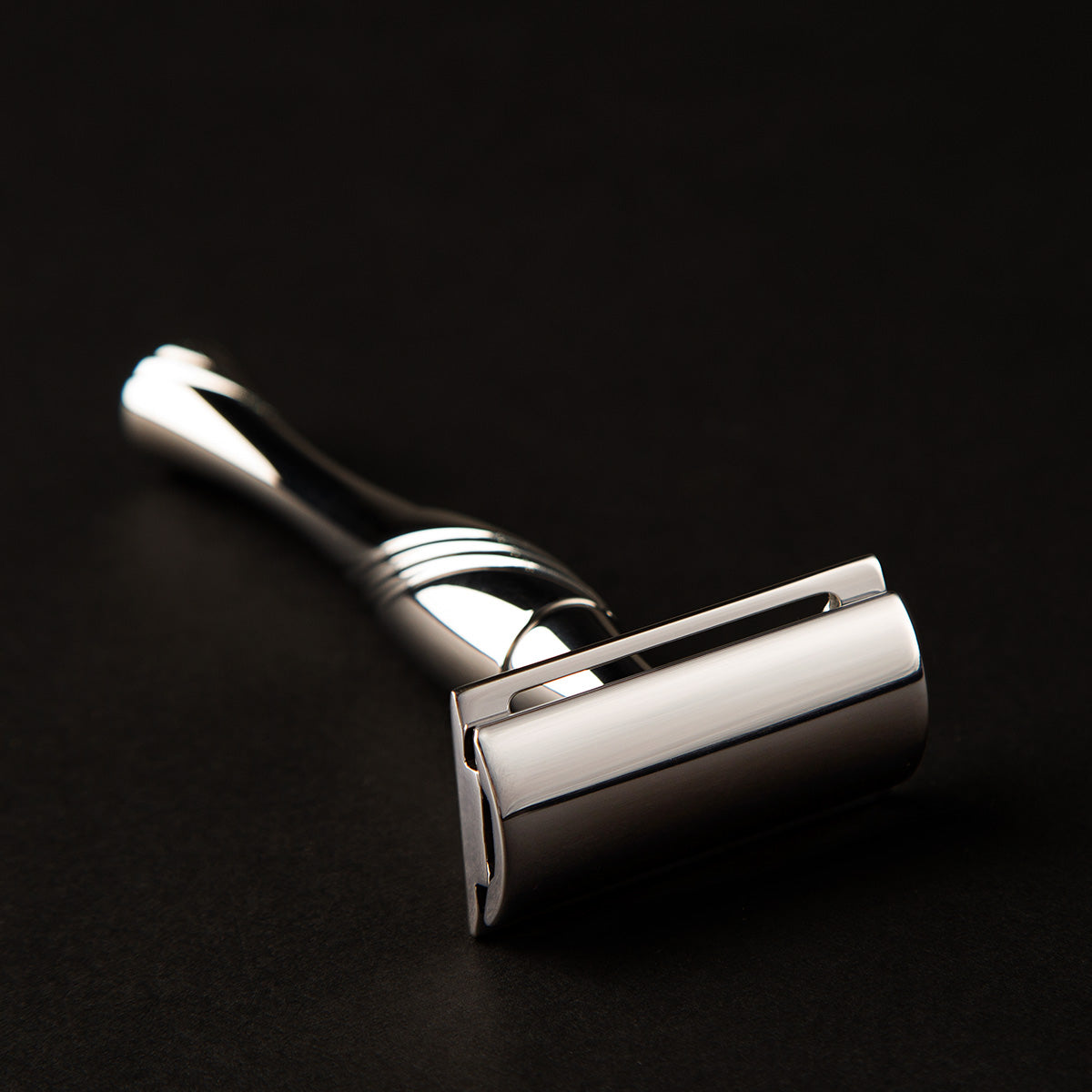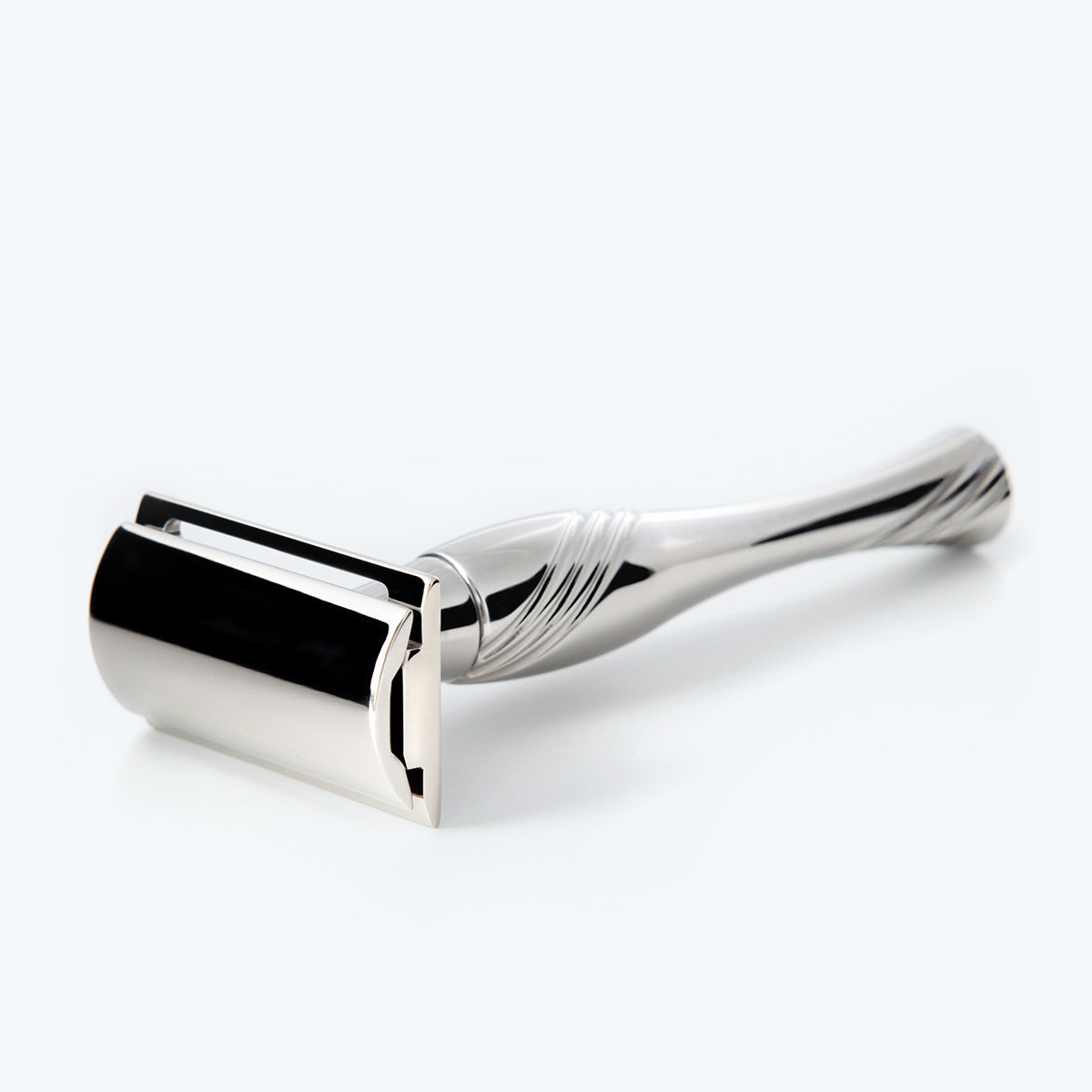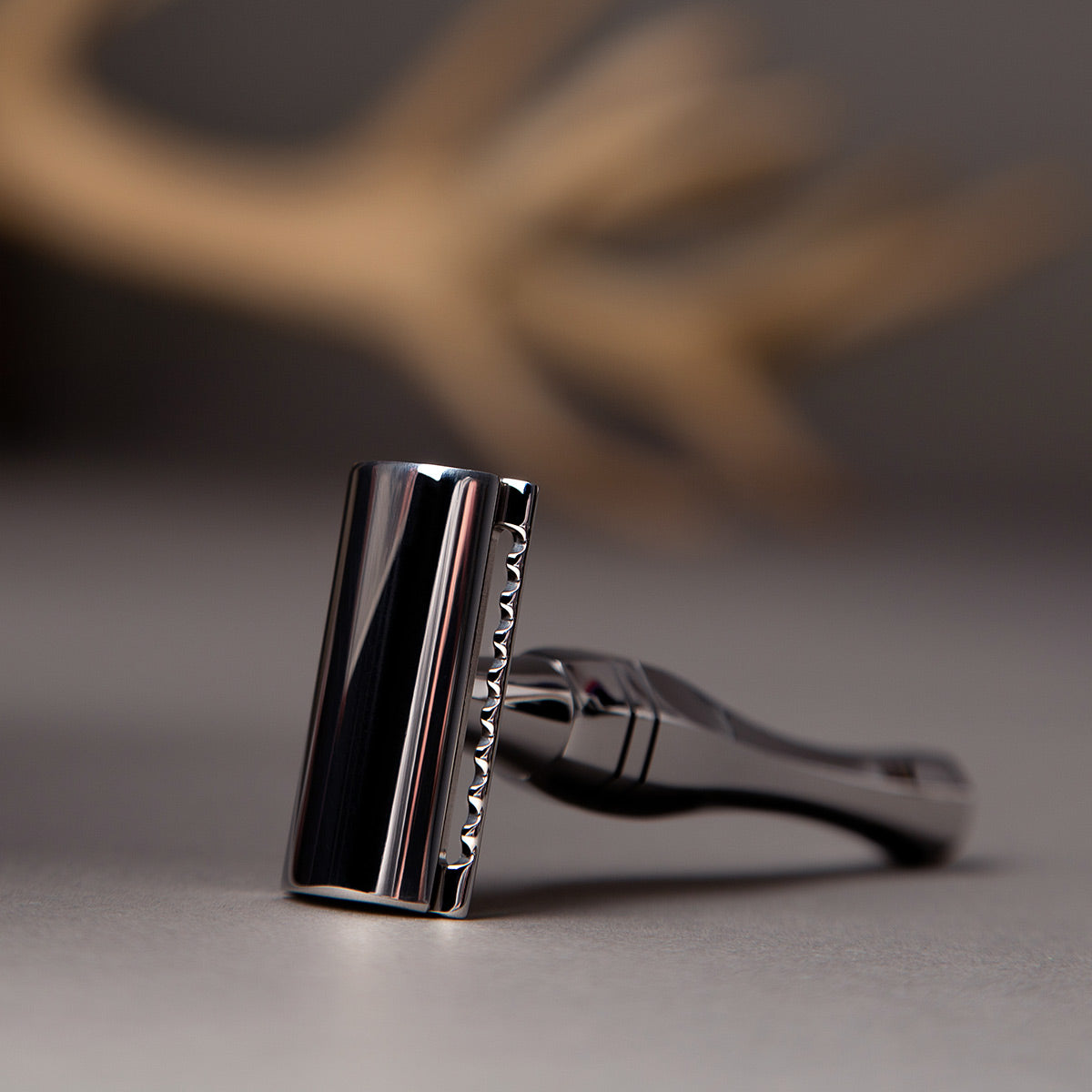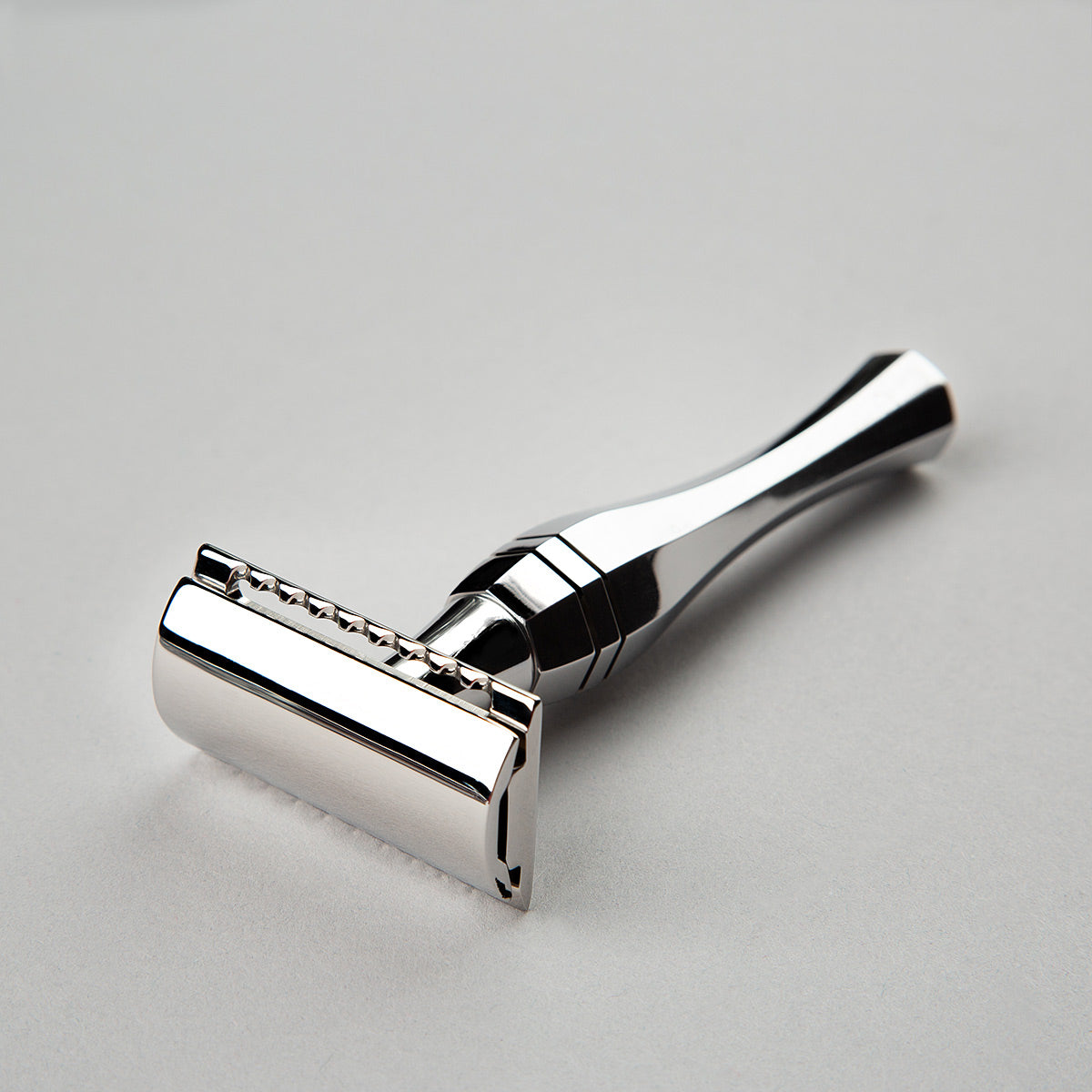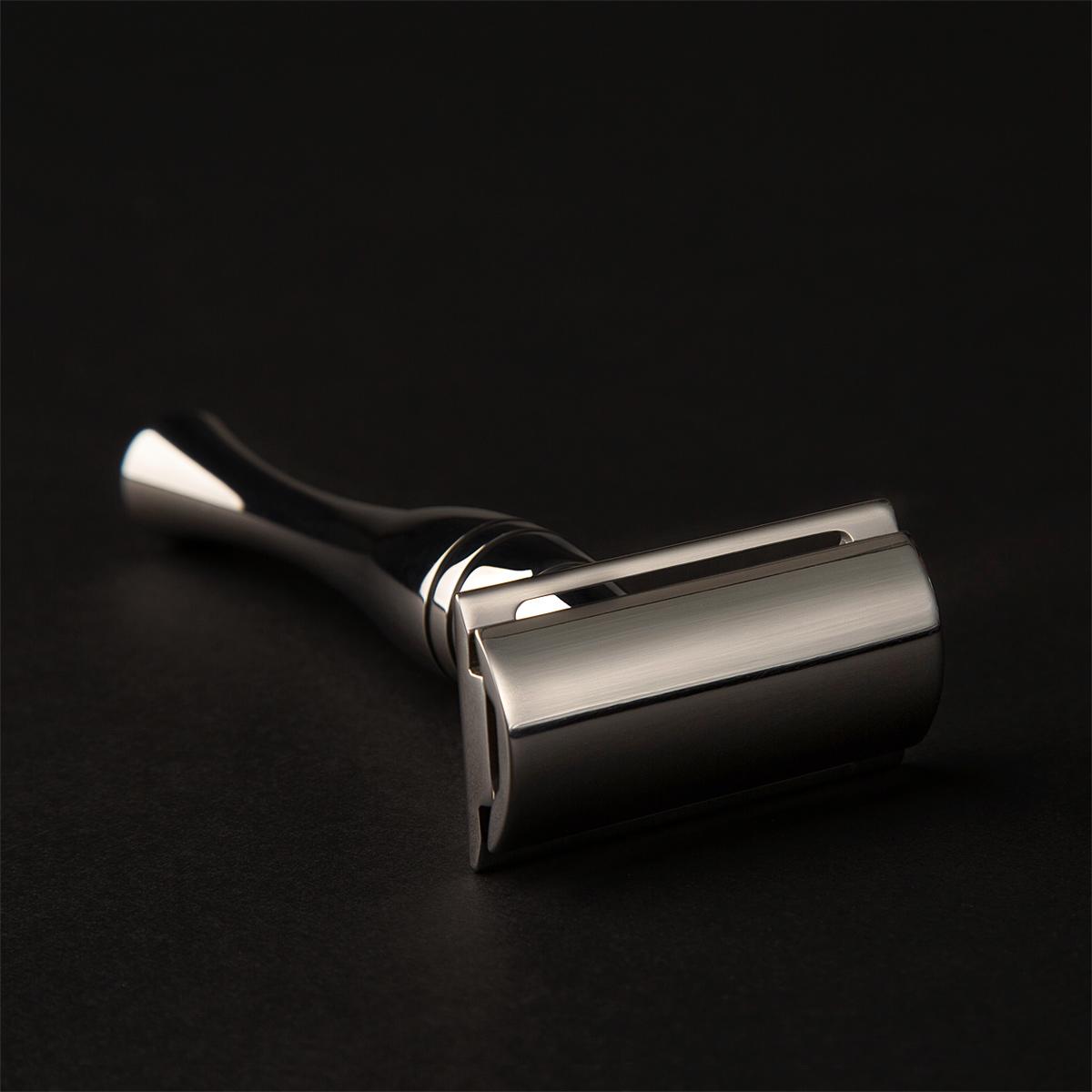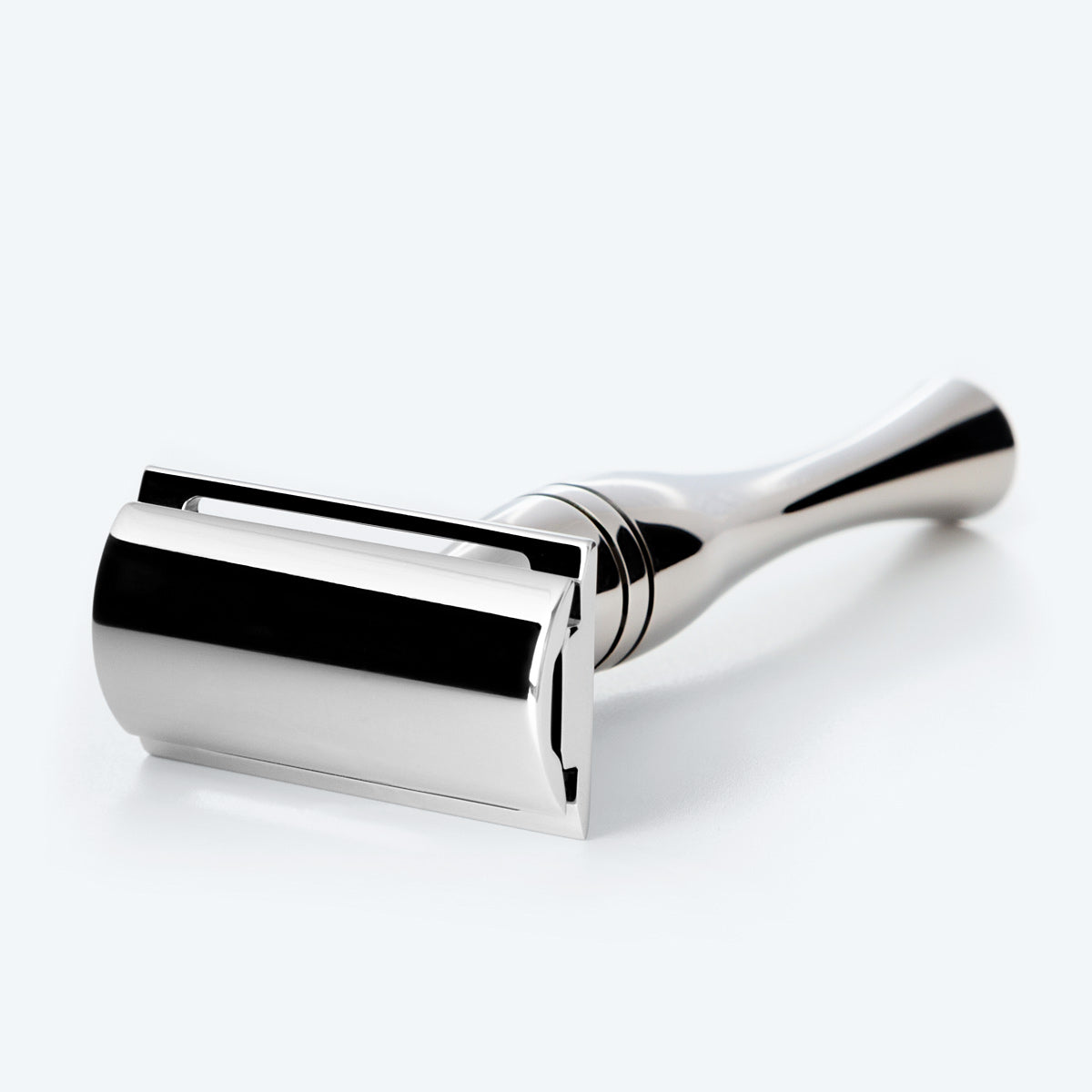Article: Tips for Shaving Sensitive Skin

Tips for Shaving Sensitive Skin
It is believed that around 50% of men experience discomfort when wet shaving due to sensitive skin. We believe that this figure is higher as many men simply don’t realise they have sensitive skin and that post-shave soreness and inflammation (the classic signs of sensitive skin) is just normal. However, using a good quality razor, a good quality shaving cream (or shaving soap) and mastering a good shaving technique allows you to maintain a healthy complexion free of irritated skin, even if your skin is sensitive.
Choosing the right razor
If you are familiar and skilled at using a safety razor, then stick to shaving with a double edge safety razor. Else, a good quality Gillette cartridge razor will suffice, one with a metal handle (all Wilde & Harte razor handles are manufactured from stainless steel) which warms up under hot water for a good grip. A 5-blade Gillette Fusion razor is our suggestion over other cartridge systems as the Fusion cartridge clips into the razor head very securely, plus there is the neat little trick of rotating the razor 180 degrees and using the precision trimmer to shave the difficult-to-reach places, such as under the nose.
Above: The Eltham Fusion Razor
For irritation-free results
1. Soften your beard hair
Having a shower before shaving is a great idea. Or, you can massage warm water over your facial hair to soften, ready for applying your shaving cream or shaving soap.
Tip: If you own a shaving brush (preferably a vegan friendly one), create a rich, dense lather from your shaving soap or cream and work the brush bristles in a circular motion into your stubble to lift the beard hair in readiness for your shave.
2. Shave with short strokes
Always shave in the direction of your beard growth (see illustration below) without applying unnecessary downward pressure. Your razor blade(s) will glide effortlessly through your stubble for a clean, close and comfortable shave, minimising nicks, cuts and razor burn.
Remember to rinse your razor blades with warm water at regular intervals during your shave to remove debris.

Above: Suggested direction of shaving with your razor
Tip: Always use the sharpest razor blades or newest razor cartridges you have available. At the first instance you experience the razor ‘tugging’, change your blades immediately (you will typically yield a handful of close shaves before blades lose their sharpness).
3. Apply skin moisturiser
Wet shaving removes dead skin cells from the surface of your skin (the act of exfoliating). It’s very important to wash away all shaving by-products and apply skin moisturising post shave balm or oil (organic, if possible) to rehydrate and protect sensitive skin.
Tip: Consider at least one or two ‘shave free’ days every week to allow sensitive skin to recover from regular exposure to sharp razor blades.
Conclusion
With clean, sharp razor blades, lathering with a quality shaving cream or soap (avoiding aerosol shaving foams) and using the correct shaving techniques, even regular shaving should not have any negative impact upon sensitive skin. However, if you rush your shave or let razor blades or razor cartridges lose sharpness, you will leave yourself susceptible to a host of unsightly skin irritations such as ingrowing hairs and razor burn.




